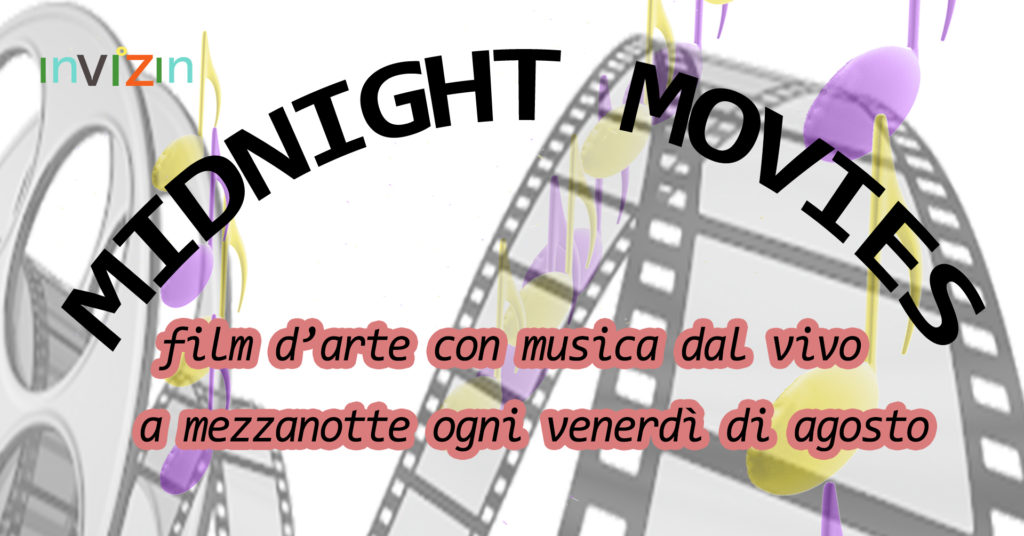Una serie di film sperimentali con musica improvvisata dal vivo ogni venerdì di agosto a MEZZANOTTE!
all’aperto tempo permettendo.
sedie a distanza.
maschere consigliate.
ingresso libero con offerta.
07.08.
Il film: Stan Brakhage – The Act of Seeing with One’s Own Eyes (1971) 31:54 min
 The Act of Seeing with One’s Own Eyes è un film sperimentale americano del 1971 di Stan Brakhage. È stato girato su 16mm senza suono sincronizzato in un obitorio di Pittsburgh. Il titolo si basa su una traduzione letterale del termine greco per autopsia. Il film fa parte della “trilogia di Pittsburgh” di Brakhage, un trio di film “documentari” realizzati da Brakhage sulle varie istituzioni della città nel 1971.
The Act of Seeing with One’s Own Eyes è un film sperimentale americano del 1971 di Stan Brakhage. È stato girato su 16mm senza suono sincronizzato in un obitorio di Pittsburgh. Il titolo si basa su una traduzione letterale del termine greco per autopsia. Il film fa parte della “trilogia di Pittsburgh” di Brakhage, un trio di film “documentari” realizzati da Brakhage sulle varie istituzioni della città nel 1971.
Brakhage ha girato The Act of Seeing with One’s Own Eyes durante una visita a un obitorio. Il film ha documentato procedure di autopsia tipiche altamente grafiche come la rimozione di organi e l’imbalsamazione.
I musicisti: Unibrido
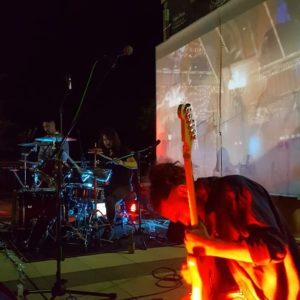 Alt-rock duo.
Alt-rock duo.
Progetto gastrointestinale musicale.
Mangiamo rabbia di vivere, espletiamo P.I.G.S. Rock.
Prima ancora di essere Unibrido, Carlo (House Of Sound, Not Found) e Marvin (The Little House Blues Band, The Blues Stalkers, The Bluesness, No Panik Music, Not Found) sono due ragazzi della ormai defunta classe media italiana che vivono nell’entroterra abruzzese (Posti incantevoli, per carità, ma non c’è una libreria nel raggio di trenta chilometri).
Costretti a lavorare in fabbrica per comprarsi gli strumenti e sopravvivere, nel 2018 uniscono idee e affinità per dare vita ad un progetto musicale viscerale ed urgente.
Grazie alla collaborazione di Luigi Caprara del Lunchbox Studio registrano i primi brani del loro album d’esordio P.I.G.S., un personalissimo spaccato sulla società contemporanea, violenta, nichilista e coloratissima.
14.08.
Il film: Aldo Tambellini, Thomas Tadlock, Allan Kaprow, James Seawright, Otto Piene, Nam June Paik – The Medium is the Medium (1969) 30 min
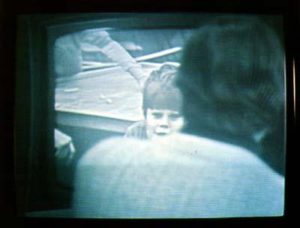 Sei artisti sono stati invitati a lavorare con i tecnici televisivi per la creazione di The Medium Is the Medium. Il lavoro Nero di Aldo Tambellini presenta immagini di diapositive, film e monitor televisivi e le risposte dei bambini. Architron di Thomas Tadlock si avvale di una “macchina ottica elettronica” di sua propria invenzione, che crea motivi simili a caleidoscopi di colore e luce. Il “telehappening” di Allan Kaprow Hello si avvale di più monitor per aiutare le persone in varie località di Boston a mettersi in contatto tra loro. Nel Capriccio di James Seawright due ballerini raffigurati in immagini negative e positive si sovrappongono in una gamma di colori. Nel Electronic Light Ballet di Otto Piene una giovane donna è levitata con mongolfiere su uno sfondo di feedback e disegni colorati. In Electronic Opera # 1 di Nam June Paik, una ballerina in topless e tre hippy hanno le loro immagini manipolate e distorte, sature di ulteriore colore. Proprio quando sembra che il lavoro stia per ricominciare dall’inizio, la voce implora gli spettatori, “Spegni il televisore”.
Sei artisti sono stati invitati a lavorare con i tecnici televisivi per la creazione di The Medium Is the Medium. Il lavoro Nero di Aldo Tambellini presenta immagini di diapositive, film e monitor televisivi e le risposte dei bambini. Architron di Thomas Tadlock si avvale di una “macchina ottica elettronica” di sua propria invenzione, che crea motivi simili a caleidoscopi di colore e luce. Il “telehappening” di Allan Kaprow Hello si avvale di più monitor per aiutare le persone in varie località di Boston a mettersi in contatto tra loro. Nel Capriccio di James Seawright due ballerini raffigurati in immagini negative e positive si sovrappongono in una gamma di colori. Nel Electronic Light Ballet di Otto Piene una giovane donna è levitata con mongolfiere su uno sfondo di feedback e disegni colorati. In Electronic Opera # 1 di Nam June Paik, una ballerina in topless e tre hippy hanno le loro immagini manipolate e distorte, sature di ulteriore colore. Proprio quando sembra che il lavoro stia per ricominciare dall’inizio, la voce implora gli spettatori, “Spegni il televisore”.
Il musicista: Teo Pace
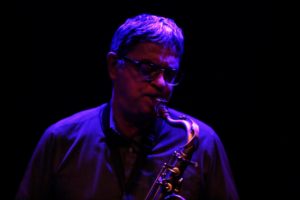 Polistrumentista autodidatta, partecipa in moltissime formazioni musicali, spaziando tra il rock progressivo, il jazz, il free jazz e la musica etnica.
Polistrumentista autodidatta, partecipa in moltissime formazioni musicali, spaziando tra il rock progressivo, il jazz, il free jazz e la musica etnica.
Suona doppio flauto, flauto traverso, clarinetto piccolo in mib, clarinetto basso, sax soprano e tenore, ciaramella e zampogna a chiave.
È stato componente di: Ert Ion, Era Orab, Iamoik, Magnetic Place, GRA/D, LoFlopper, Ratablò, Orchestra della Transumanza, e Paranzella.
Attualmente suona con Malafé e Riot.
21.08.
I film:
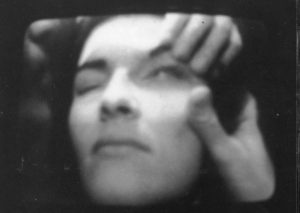 Vito Acconci – Pryings (1971) 17:10 min.
Vito Acconci – Pryings (1971) 17:10 min.
Documentazione di un’esibizione dal vivo alla New York University, Pryings è un’esplorazione grafica delle dinamiche fisiche e psicologiche dell’interazione uomo / donna, uno studio sul controllo, la violazione e la resistenza. Chiusa in un abbraccio silenzioso, la lotta della coppia è violenta, passionale; La coercizione sadica di Acconci si tinge di una tenerezza sinistra. Il corpo è un veicolo per una messa in scena letterale del desiderio e della resistenza contro il contatto intimo.
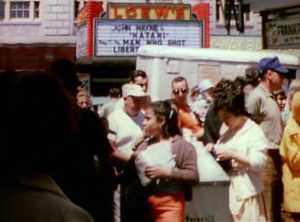 Marie Menken – Go! Go! Go! (1964) 11:31 min.
Marie Menken – Go! Go! Go! (1964) 11:31 min.
Per Menken, l’animazione è diventata un modo di trasformare radicalmente il mondo intorno a lei, rivisitazione New York del dopoguerra, per esempio, nel suo capolavoro del singolo fotogramma cinematografia. Go! Go! Go! (1962-64), un’opera che condensa due anni di paziente film documentaristico in una visione delirante ed esilarante di una città iperattiva.
Il musicista: Alessandro Cicchitti (Sperimentazioni vocali)
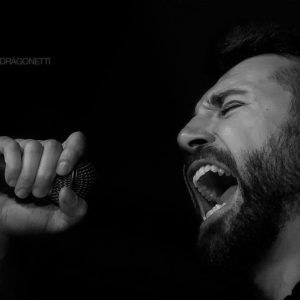 La voce è il suo strumento, il primo strumento. Una ricerca vocale con se stesso che dura da circa 15 anni (alcuni dei quali passati con il gruppo sperimentale The Suricates) con la quale si è addentrato nel “rumorismo”, dove la grammatica musicale non concede, ma si ha la possibilità di considerare ogni suono utile alla composizione improvvisata. La voce si sdoppia con le diplofonie (come ci ha insegnato il Maestro Demetrio Stratos – Area) per poi moltiplicarsi all’interno di campionamenti live, microfoni CB, registratori e distorsori giocattolo.
La voce è il suo strumento, il primo strumento. Una ricerca vocale con se stesso che dura da circa 15 anni (alcuni dei quali passati con il gruppo sperimentale The Suricates) con la quale si è addentrato nel “rumorismo”, dove la grammatica musicale non concede, ma si ha la possibilità di considerare ogni suono utile alla composizione improvvisata. La voce si sdoppia con le diplofonie (come ci ha insegnato il Maestro Demetrio Stratos – Area) per poi moltiplicarsi all’interno di campionamenti live, microfoni CB, registratori e distorsori giocattolo.
Giocare con la voce passando per la musica popolare, trip hop e noise.
28.08.
Il film: Pina Bausch – Café Müller (1978) 49 min.
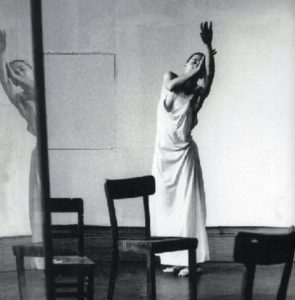 Un pezzo di Pina Bausch
Un pezzo di Pina Bausch
Musica – Henry Purcell
Regista e coreografa – Pina Bausch
Scenografia e costumi – Rolf Borzik
Collaborazione – Marion Cito, Hans Pop
Malou Airaudo, Pina Bausch, Meryl Tankard, Rolf Borzik, Dominique Mercy, Jan Minarik
Premiere 20 maggio 1978, Opera House Wuppertal
“Quello che vedi è quello che ottieni, un’esperienza teatrale molto carica eseguita da attori dall’aspetto maturo che sembrano trascorsi dalla vita prima ancora di iniziare a vivere. L’eccitazione emana dall’energia altamente controllata, dall’uso brillante dello spazio, dalla sovrapposizione cinematografica e dal flusso di immagini.”
Il musicista: Giulio Marino
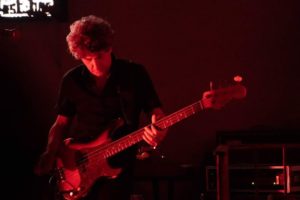 Nato ad Ortona (CH) Italia
Nato ad Ortona (CH) Italia
vive ad Ortona
Attualmente bassista in polemica e RIOT
bassista dall’età di 23 anni (prima debuttò come cantante/chitarrista)
anche contrabassista, chitarrista e cantante.
Ha suonato 10 anni il contrabasso con gruppi jazz, ethnic e di improvvisazione radicale.
Ha suonato 10 anni come chitarrista/cantante nelle rock bands Materiale Resistente, Disorchestra e altre…



